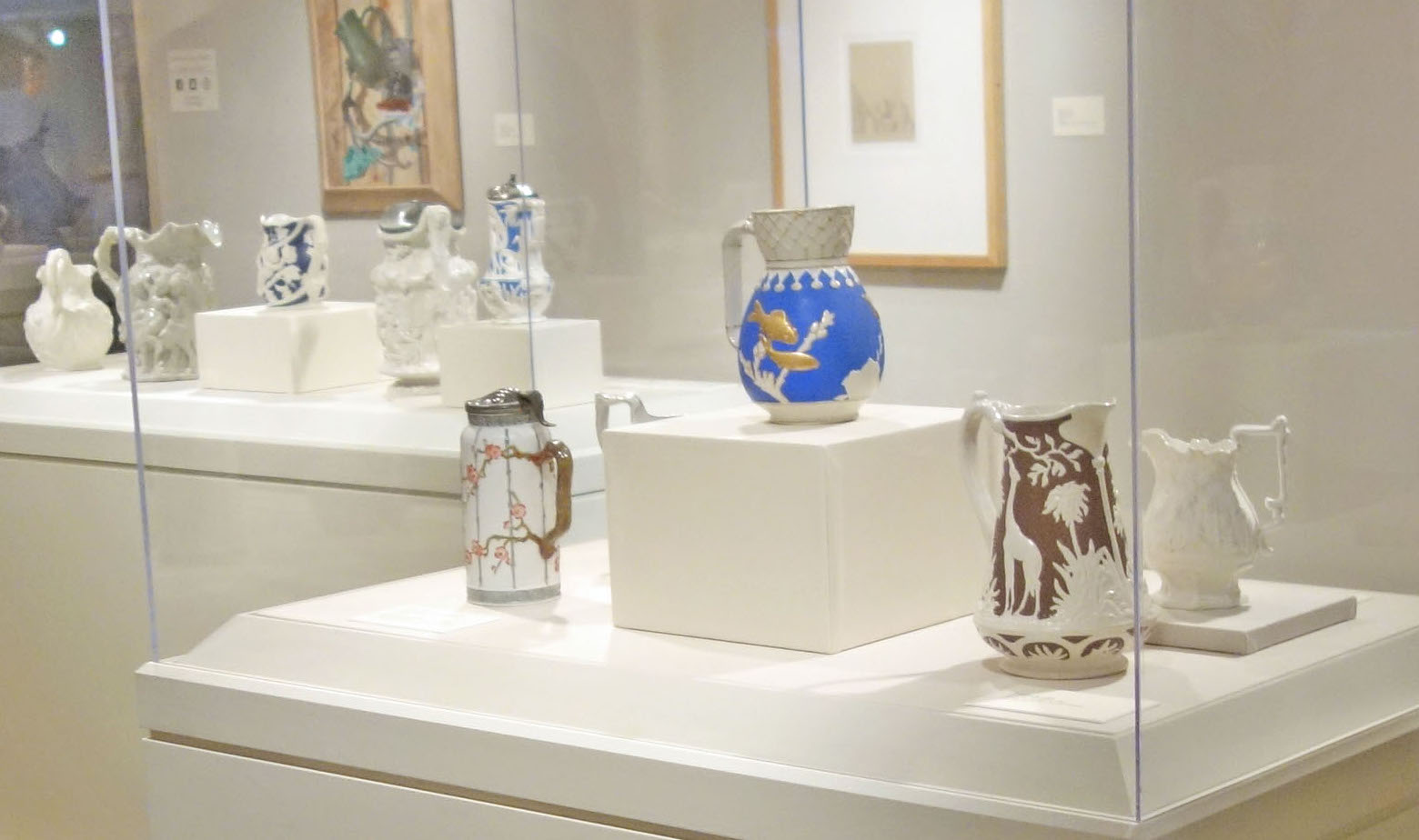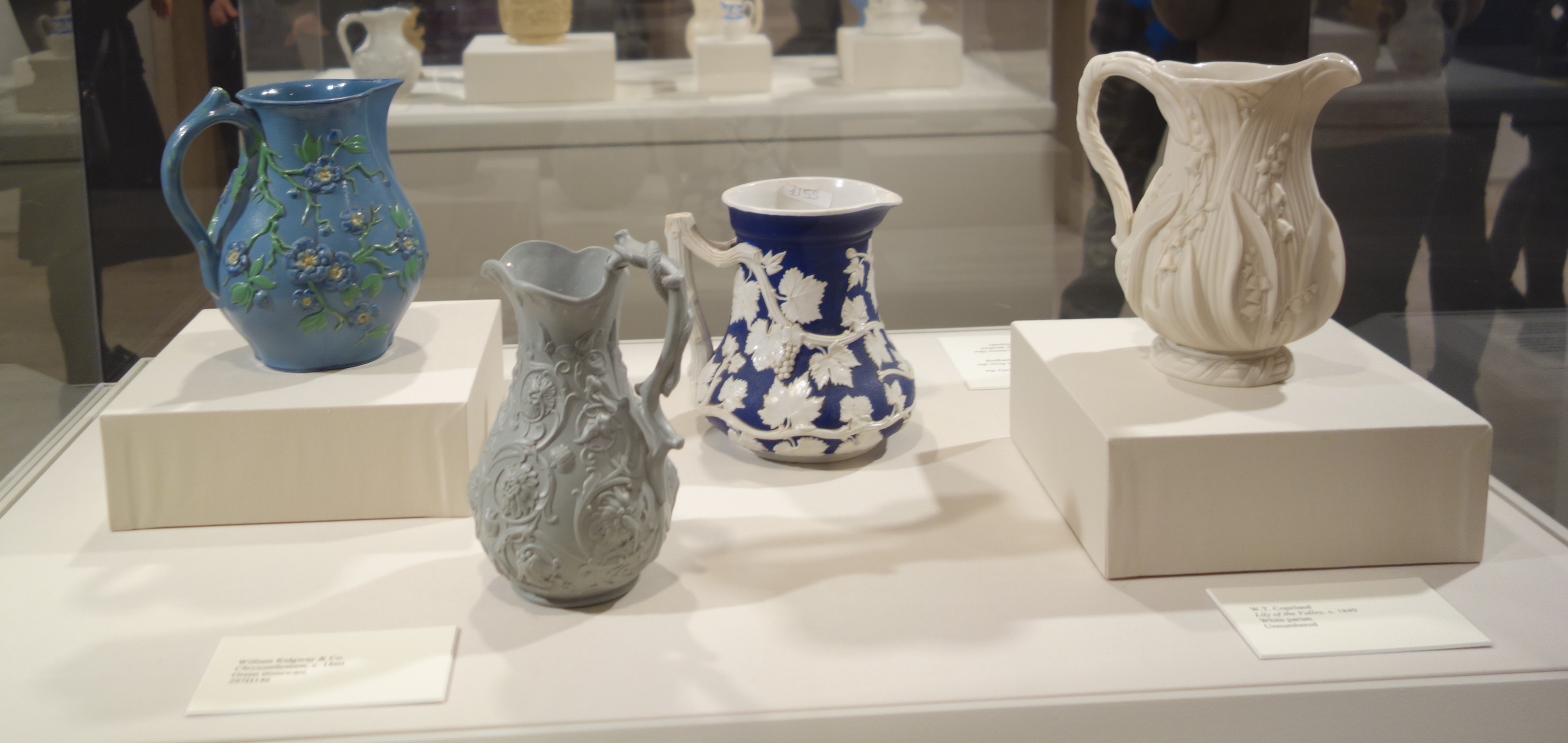Introduction
- Images from the Exhibit
We see water bottles everywhere today. But before the invention of plastic, ceramic jugs were the common vessels used to carry liquids. The stoneware jugs in this exhibition were made with molded deep relief ornament that depicted nature and told stories. Common on many tables in Victorian England, these jugs were made by factory labor using new technologies and represented high design in the applied arts of the mid-nineteenth century.
How were they used? Just like today, they carried liquids and contained clues about art, technology and culture. Available in multiple sizes and easily broken, each household may have owned more than one jug to carry out domestic tasks. Families also probably used them to carry beer home from public houses (pubs). Some jugs were so ornate and three-dimensional that they may never have contained liquids at all, but rested on a mantelpiece or table-top to be admired.
This exhibition is broken into four sections. The first part explores the techniques of making, especially the abundant use of molds to ornament an everyday item. A second section examines Victorian ideas about artful design and its moral benefits, especially for the working class. A third grouping delves into the meanings of molded patterns. Finally, the closing area turns to people, pointing to the harsh conditions for factory workers as well as the joy of the collector of these vessels.


